Submitted by WA Contents
"We should establish a relationship with the robotized world and real architecture" says Koolhaas
Italy Architecture News - Jun 06, 2016 - 09:37 8810 views

OMA founder Rem Koolhaas spoke about the specific theme 'infrastructure' as the theme of 'Meetings on Architecture', which is one of discussion series of the Venice Architecture Biennale held on Saturday May 28, 2016. Koolhaas compared 'robotised world' and 'real architecture' by saying ''we should establish a relationship with the robotized world and real architecture to interact with the user''. Regarding to infrastructural problems of the countryside, Koolhaas said ''there are many projects in the exhibition actually are not looking quite to at urban situations, but countryside, or non-urban condition is getting attention that initially takes palace at the Biennale.''
Speaking at 'Meetings on Architecture' panel, OMA founder insisted that 'robotised world' is one dimension of countryside, that is, a form of high organization of the countryside to support realities that we contain to call an urban- but this is actually transforming the countryside in a way which is more radical that they are cities we currently changed.
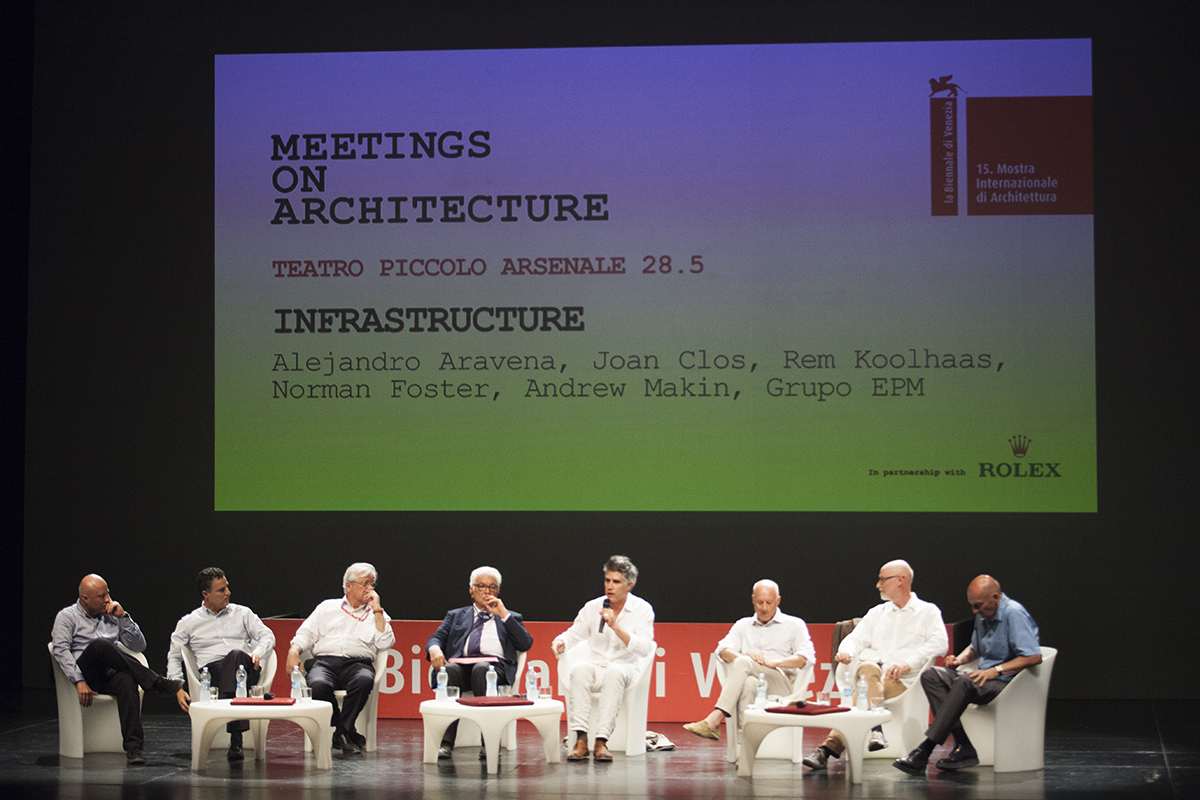
Image © Italo Rondinella, courtesy of Venice Biennale
More than 500 people listened the first meeting of the Biennale discussing the theme 'infrastructure' with Paolo Baratta, Alejandro Aravena, Joan Clos, Rem Koolhaas, Norman Foster, Andrew Makin, Grupo EPM at the Teatro Piccolo Arsenale. Invited by Paolo Baratta and Alejandro Aravena, a mixed group of speakers including designers, decision makers and practitioners explained the insights of what they are presenting at the Biennale and explained what it took to get these projects done.
The opening speech of discussion started with Paolo Baratta, President of Venice Architecture Biennale, explained the essence of the exhibition by speaking about the main theme and the sub-themes of the exhibition. ''The exhibition is symphony like a classical symphony. There is a main theme and second theme and possibly third one. The main theme that is written on the manifesto, on the book and on the catalog'' said Baratta.
''But, there is also a second theme that is we want to see a talk about architecture in the making. We want to see architecture not as a way to give responses in terms of volume and forms but a way to proceed from needs, desire, decisions to be taken by an individual, institutions- obstacles that have to be overcome, difficulties that have been found, failures and successes that are very much in the phenomenology of architecture as a process through which we must do our destiny through which we take part through decision process'' Baratta added.

Image © Italo Rondinella, courtesy of Venice Biennale
''Problem solving is a certainly among the main responsibility of the profession of the architect. This is the second line together with Aravena we consider and that is giving us a tensions that is a profession of the architect has to face, solve, provoke, and overcome'' he insisted.
Particularly, Norman Foster and Rem Koolhaas were triggering names of the discussion as Norman Foster's latest project, called 'the smallest airport of the world', Droneport in Africa provides medical supplies and other necessities to people where no infrastructure exists at all, and Foster's project was directly related to the theme of 'infrastructure', focusing on design process, experience, strategies and infrastructural problems of Africa.
Rem Koolhaas, who was the curator of previous exhibition at the Venice Architecture Biennale 2014, searched for Fundamentals, the basic elements of architecture like staircases, windows, toilets, fire spaces, elevators etc.. representing the discipline for the architects but also for its dialogue with clients and society. Koolhaas said ''I am not just here as a practitioner, I want to offer some reflections on the current situation''
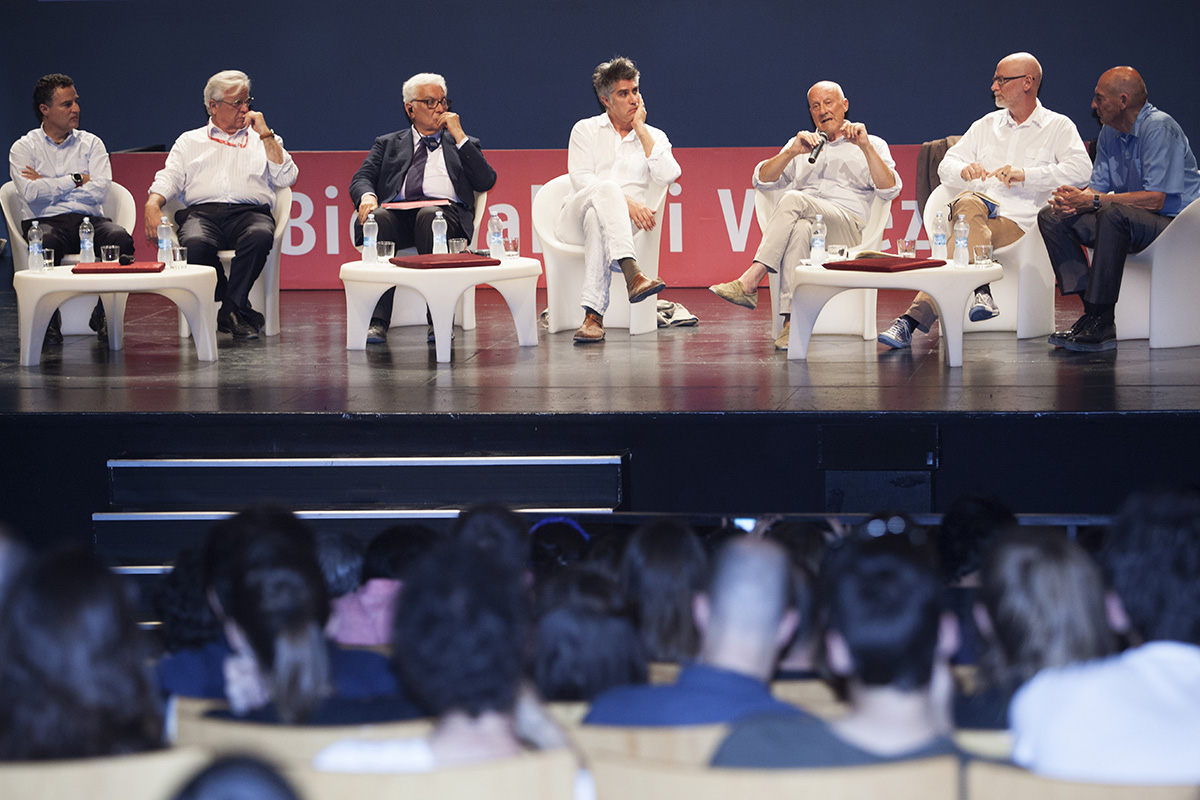
Image © Italo Rondinella, courtesy of Venice Biennale
After Baratta's opening speech, Alejandro Aravena made a short introduction about why they invited those names and explained what we should expect from this meeting. ''We asked different architects and participants of the Biennale and had projects over there to come once a month and to share in their own words with- what they are presenting there? Why should we care? What were the critical or tipping points of their design procedures that allow them to go from paper to reality'' said Aravena.
''We have two other persons like Foster and Koolhaas and all these three projects tend to be connected to the 'infrastructure' from Droneport to an abandoned piece of highway that was transformed the market in the urban and Water Tanks in the city of Medellin’s'' stated Aravena.
''Infrastructure and the quality of life in cities could be a theme but there are maybe other challenges to people here that ‘the realization’ much be broader that what we may be seem today'' he added.
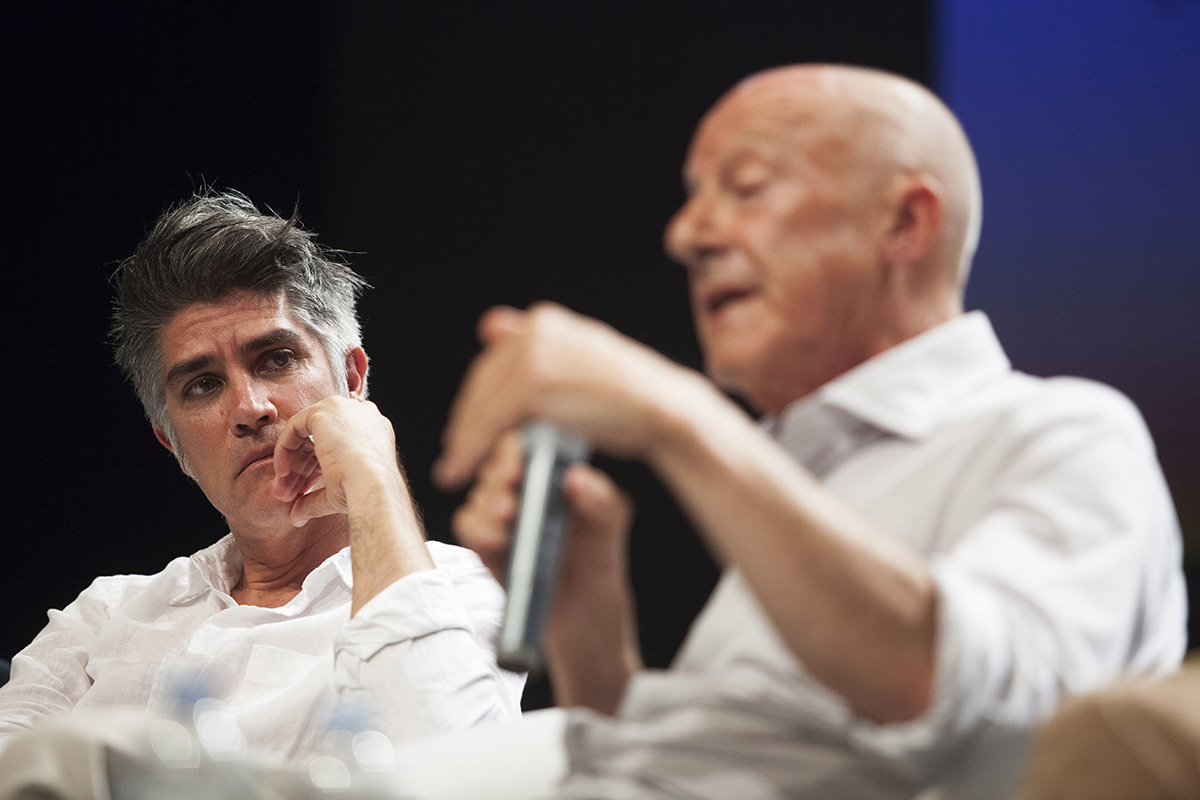
Image © Italo Rondinella, courtesy of Venice Biennale
Norman Foster spoke about his new building Droneport in Africa tackling with the infrastructural problems. Foster said ''Africa suffers a lack of infrastructure and its population will grow by 2050 which has no infrastructure and this very challenging situation.''
''Using the technology of drones not in a military context but in humanitarian context to deliver swiftly and very cheaply urgent medical supplies and also cargo –these two lines are overlapping each other-we have two concepts medical line and the blue line'' Foster added.
''It is more than just a droneport more than a place where the drones become service, a place and capsules to containing supplies- these touch down- it is maybe close to a medical center, a community center maybe a market'' he stated. ''This building should have a kind of civic presence in the hostile landscape. I have always impassion for the next step it seems that the conventions of practice too restrictive'' Sir. Foster stated.
Then Norman Foster explained how the design process took shape while bringing other participants together. ''Through my foundation I was able to honest about the idealism of younger people. I have tremendous enthusiasim for working with younger generation including ETH Zurich, MIT, Cambridge University, Polytechnic University of Madrid, Lafarge Holcim, and only in a few months, we were able to create just a half size mockup which was tested to distraction'' explained Foster.
''Through this experimentation, we got a sustainable product including 1% additive and 8% cement – the concept is a droneport prototype vault which is additive infinitely flexible. So it gave us a basis for an instruction manual for remote communities, an emerging economies and economies beyond Africa'' he added.
Foster also talked about the history of vault system, which was born in Africa and exported to Spain. ''This is a project, shelter will be made locally it is providing jobs the community and it has ownership. It becomes a part of through community project. It provides nobility in the making of things and people will see it and it is not just a paper vision in its first step closer to reality'' he claimed. ''This basic idea comes from absolute basics of shelter being part of this process to bring those individuals together'' Foster concluded.
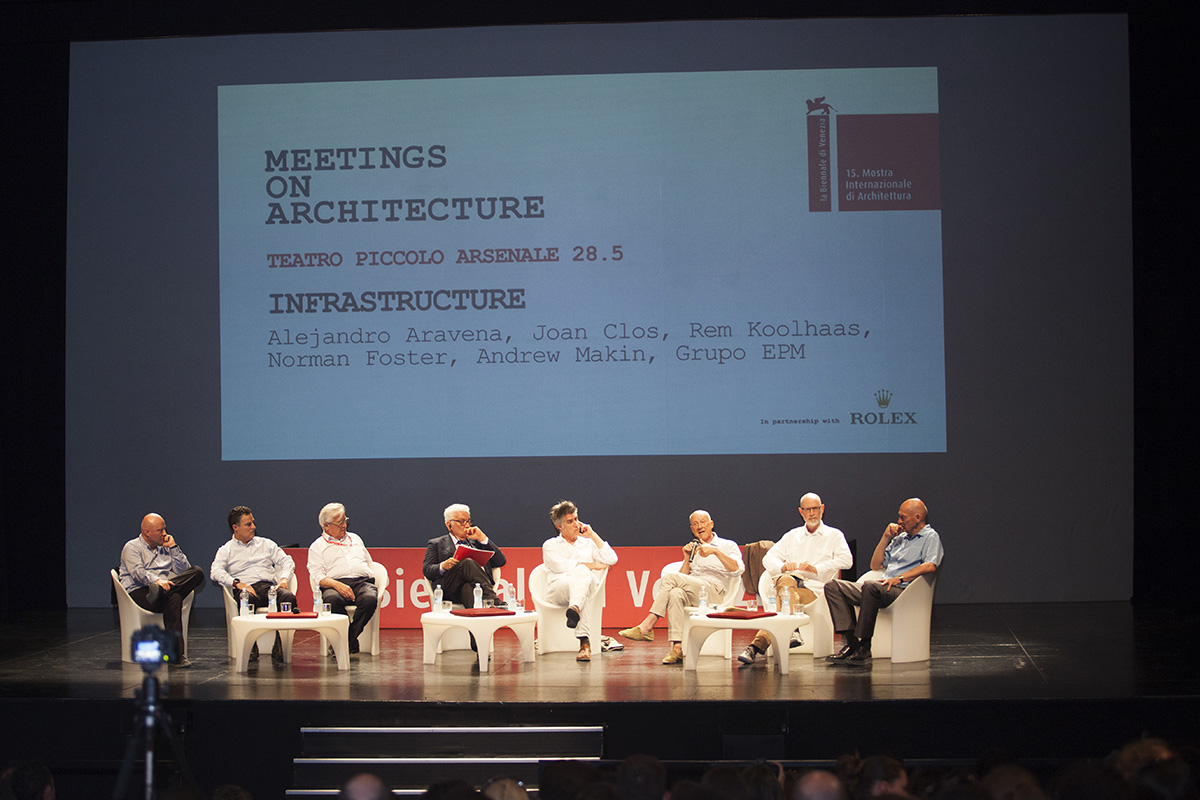
Image © Italo Rondinella, courtesy of Venice Biennale
Rem Koolhaas talked about enormous structures in Nevada, which contains companies like Tesla and Amazon. Koolhaas said ''Tesla and Amazon are building enormous structures out in the countryside where few human beings worked, and everything was automated.'' ''There are many projects actually not looking quite to at urban situations but countryside or non-urban condition is getting attention that initially takes palace at the Biennale'' Koolhaas stated.
''I think this is interesting because we are not looking at countryside and threatens to remain very visible for too long'' he added.
''I am really fascinated by the manifestations of the digital world outside the cities. Also, I am fascinated by world of Amazon, the world of Distribution Centers, the world of Fullfilment Centers, the world of Server Farms, which have an attempt to connect to the countryside'' claimed Koolhaas.
''How do we define a public realm in these situations? Could we regain architectural initiative by simply embracing these abstractions, even lack of inhabitation and go back to an architecture, which is really radical, really stark, an architecture, which is not beige, an architecture which has not handicapped access, an architecture which is really pure, stark and amazing.''
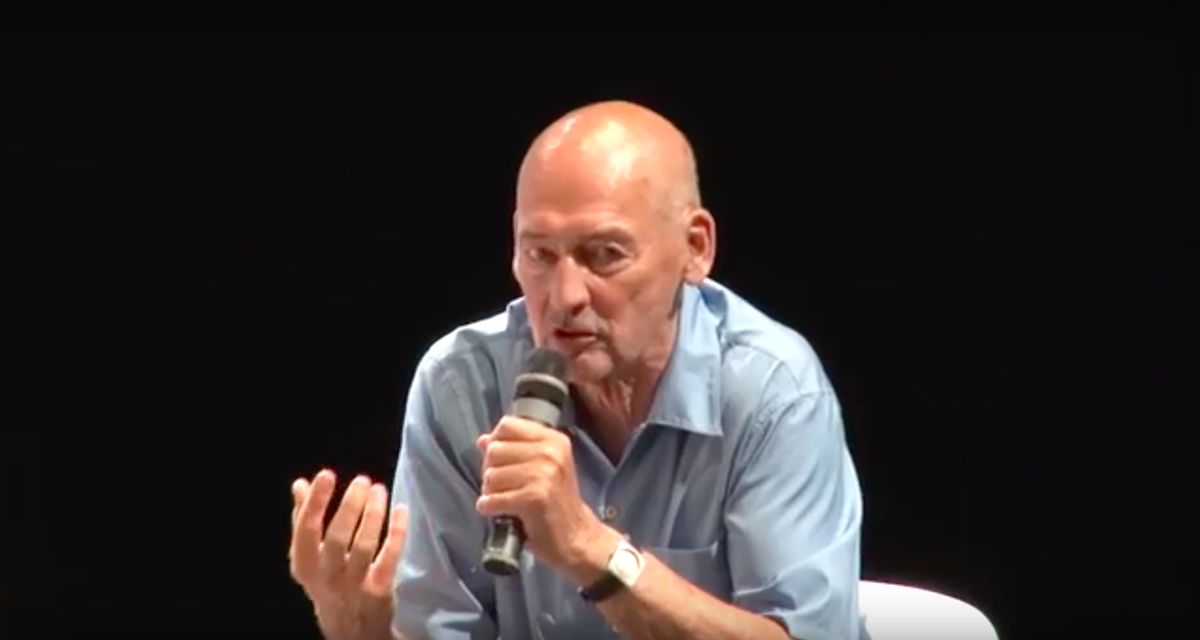
Rem Koolhaas at Meetings on Architecture panel. Image via Youtube.
''It would not be a simple but as architecs we should establish a relationship with the robotized world and real architecture to interact with the user. Do robots need to play? or we should imagine it a kind of new playground where humans and robots interact. This is one dimension of countryside, that is, a form of high organization of the countryside to support realities that we contain to call an urban- but which are actually transforming the countryside in a way, which is more radical that they are cities we currently changed'' Koolhaas emphasised.
''Silicon Valley has been projecting the essence of the Internet –some kind of ethereal, and immaterial entity that enable us to see wonderfully a light from of communication.'' ''Will we continue to ignore these kinds of things this is happening but it has nothing to do with this? Or whether we are challenged to fight simple a purpose of it or should create some kind of effort to make it accessible part of the world’s repertoire? If so, how we can do that then?'' Koolhaas concluded.
Reporting From The Front opened to the public on May 28 and can be visited till November 27, 2016. The Venice Architecture Biennale 2016 announced important meetings on architecture, which still continue to take place until November 26, 2016 in different places of Venice.
Top image © Italo Rondinella, courtesy of Venice Biennale